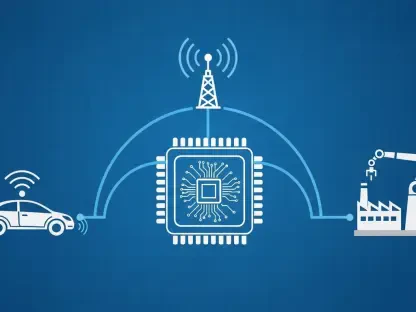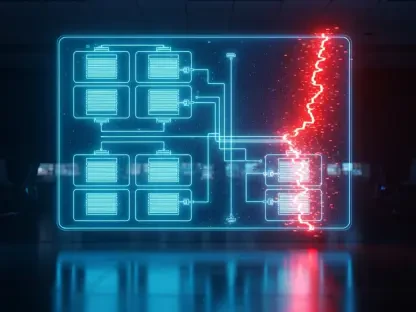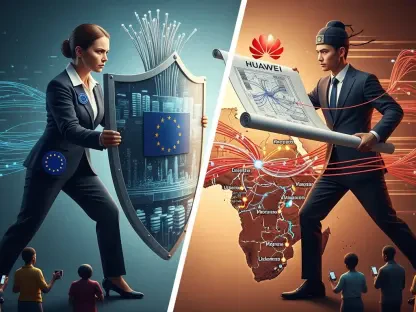In an era where digital connectivity underpins nearly every facet of daily life, the security of telecommunications infrastructure has never been more critical, especially when a leading South Korean telecom giant like KT Corp finds itself grappling with severe network breaches. With millions of users relying on seamless and secure communication services, the revelation of malicious code infections and vulnerabilities in KT’s systems raises alarming questions about the safety of consumer data. This review delves into the technological underpinnings of KT Corp’s cybersecurity framework, examining its strengths, exposed weaknesses, and the broader implications for the telecom industry.
Financial Backdrop Amidst Technological Challenges
KT Corp, a cornerstone of South Korea’s telecommunications landscape, recently reported a robust 16% increase in third-quarter earnings, amounting to 445 billion Korean won, or roughly $304.9 million. This financial uptick, driven by a 34% surge in handset sales, a 20% boost in cloud revenue, and a steady rise in service income, paints a picture of operational success. However, this positive narrative is juxtaposed against significant cybersecurity lapses that threaten to undermine these achievements.
Despite the impressive earnings, investor confidence took a hit with a 2.2% decline in KT’s Seoul-listed shares following reports of network security issues. This market reaction highlights a growing concern that technological vulnerabilities could overshadow financial gains. The challenge for KT lies in balancing its revenue growth with the urgent need to fortify its digital defenses, ensuring that economic success does not come at the cost of consumer trust.
Analyzing KT’s Cybersecurity Framework
Server Security Breaches and Malware Exposure
A joint government-private investigation uncovered a disturbing reality: KT’s servers had been infiltrated by malicious code, including the notorious BPFDoor malware, linked to the China-backed Red Menshen group. This breach, which persisted undetected for several months, exposed critical flaws in KT’s monitoring and response mechanisms. The failure to promptly report this intrusion further compounds the issue, pointing to gaps in transparency and accountability within the company’s cybersecurity protocols.
The technological implications of such a breach are profound, as malware like BPFDoor can compromise data integrity and enable unauthorized access to sensitive information. For a telecom provider, this represents a catastrophic risk, potentially affecting millions of users who depend on secure communication channels. KT’s delayed reaction underscores the need for advanced threat detection systems and more rigorous internal oversight to prevent such incidents from recurring.
Femtocell Network Weaknesses
Beyond server infections, KT’s femtocell network—a system designed to enhance indoor cellular coverage—revealed significant vulnerabilities that allowed unauthorized devices to bypass encryption protocols. This flaw enabled the interception of payment authentication data, directly jeopardizing user security. Such a breach in a component meant to improve service accessibility illustrates how even well-intentioned technologies can become liabilities if not adequately safeguarded.
The scale of this exposure is particularly concerning, as it affects a wide range of customers who rely on secure transactions through their mobile devices. Addressing these weaknesses requires a comprehensive overhaul of encryption standards and access controls within KT’s femtocell infrastructure. Without such measures, the trust in KT’s ability to protect user data remains fragile, impacting its reputation in a highly competitive market.
Legal and Regulatory Implications of Tech Failures
The cybersecurity failures at KT have not gone unnoticed by regulatory bodies, leading to allegations of obstruction of justice due to the company’s provision of false information and concealment of evidence. This legal scrutiny, now referred to law enforcement for deeper investigation, signals potential penalties that could further strain KT’s resources. The intersection of technology and law here emphasizes how digital lapses can translate into tangible corporate liabilities.
In response, KT has committed to replacing USIMs for all customers, an initiative projected to cost over 100 billion Korean won, or approximately $68.5 million. Additionally, compensation plans for affected users and allocations for micropayment victims have been outlined, though uncertainties around fines persist. These steps, while necessary, highlight the financial burden that technological shortcomings can impose, diverting funds from innovation to damage control.
Industry Context and Competitive Pressures
KT’s struggles are not isolated but reflect broader cybersecurity challenges within South Korea’s telecom sector, as evidenced by rival SK Telecom’s recent quarterly loss following a hefty fine for data exposure. This pattern suggests systemic issues in how telecom companies prioritize and implement security measures. For KT, staying competitive means not only matching rivals in service offerings but also surpassing them in safeguarding customer information.
The consensus across the industry points to an urgent need for enhanced security protocols and greater transparency in handling breaches. As cyber threats evolve, telecom providers must adopt proactive strategies, integrating cutting-edge technologies like artificial intelligence for real-time threat detection. KT’s experience serves as a cautionary tale, urging the sector to view cybersecurity not as an afterthought but as a core component of operational strategy.
Leadership Transition and Strategic Tech Direction
Compounding KT’s technological and legal challenges is an impending leadership change, with the current CEO, Kim Young-shub, opting not to seek reappointment. A new CEO, to be selected by a committee of independent board directors with a final decision slated for a shareholders’ meeting in the coming year, will inherit a company at a crossroads. This transition introduces uncertainty regarding the future direction of KT’s cybersecurity initiatives and overall technological strategy.
The incoming leadership will face the daunting task of steering KT through ongoing crises while setting a robust agenda for digital security enhancements. The ability to align technological upgrades with strategic vision will be critical, especially in restoring stakeholder confidence. How this new direction unfolds could redefine KT’s standing in the telecom landscape, either as a leader in secure innovation or a cautionary example of missed opportunities.
Verdict on KT’s Cybersecurity Posture
Looking back, KT Corp’s journey through recent quarters revealed a stark contrast between financial prowess and technological vulnerabilities, with server breaches and femtocell flaws exposing significant gaps in its cybersecurity infrastructure. The legal fallout and industry-wide trends further amplified the severity of these lapses, painting a picture of a company struggling to reconcile growth with security imperatives. The leadership transition added another layer of complexity, casting doubts on the immediacy of effective reforms.
Moving forward, KT must prioritize the deployment of state-of-the-art security solutions, such as advanced encryption and continuous network monitoring, to prevent future breaches. Collaborative efforts with industry peers and regulatory bodies could foster a unified approach to tackling cyber threats, setting new benchmarks for telecom security. Additionally, transparent communication with customers about security measures and breach responses will be vital in rebuilding trust and ensuring long-term stability in an increasingly digital world.









